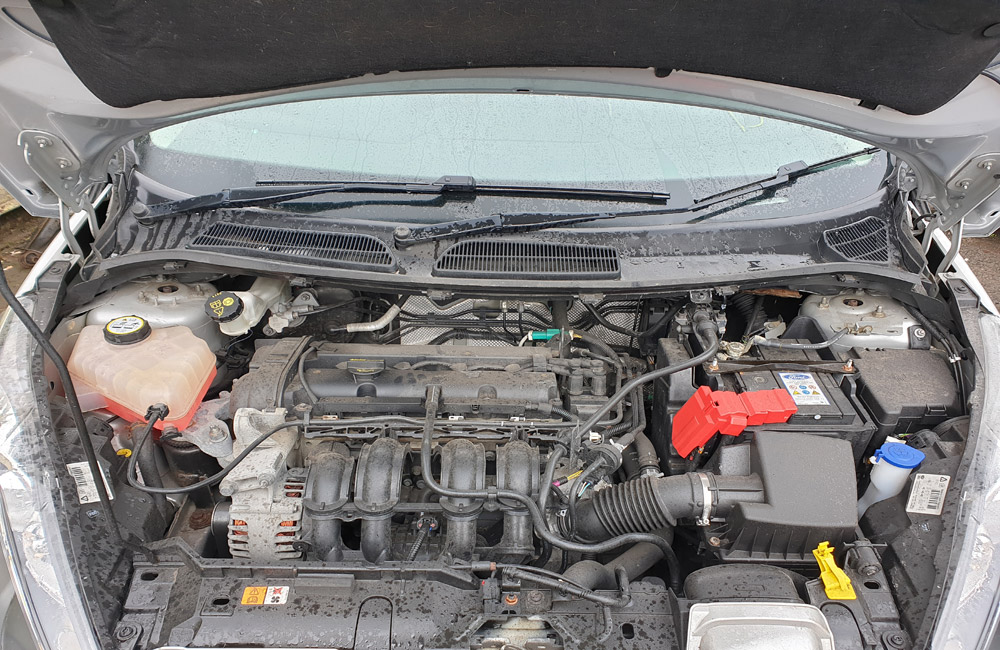Expert Tips for Optimizing Your Ford Fiesta Engine Efficiency
Expert Tips for Optimizing Your Ford Fiesta Engine Efficiency
Blog Article
Checking Out the Development of Engines: From Classic Layouts to Modern Marvels
From the preliminary vapor engines that powered the Industrial Change to the introduction of inner burning engines that changed movement, each stage has contributed to better effectiveness and capability. As we analyze these turning points, one have to think about how the future of engine style might unfold, testing our assumptions of power and efficiency.
The Birth of Engine Modern Technology
The introduction of engine innovation noted a critical moment in human advancement, changing energy conversion and transportation. The earliest engines emerged from the requirement to harness mechanical power for practical usage, leading to the advancement of tools that transformed various power types into motion (ford fiesta engine).
The growth of the interior combustion engine and the development of the vapor engine militarized an extensive shift in industrial capabilities. These engines not just enhanced efficiency but additionally increased the scope of human flexibility, making it possible for unmatched transportation opportunities. The very early models laid the groundwork for the mechanical globe, facilitating the increase of industries and reshaping societal structures.
As engine styles developed, they integrated cutting-edge materials and progressed engineering principles, leading the method for modern developments - ford fiesta engine. The birth of engine innovation stired up an unrelenting pursuit of efficiency and power, establishing the stage for the vibrant evolution of transport and industrial machinery that would certainly adhere to
Steam Engines and Their Impact

The heavy steam engine's impact was specifically evident in the transportation sector (ford fiesta engine). Steam-powered locomotives helped with the rapid motion of goods and individuals throughout substantial ranges, properly diminishing the geographical obstacles that had previously impeded trade and interaction. Likewise, steamships changed maritime travel, permitting quicker and a lot more dependable crossings of seas and rivers.
In market, steam engines powered factories, making it possible for mass production and the rise of urban centers as hubs of economic task. Steam technology fostered innovations in design and production procedures, laying the foundation for future advancements in engine layout.
The Surge of Inner Burning
Often eclipsing steam power, the increase of internal burning engines noted a transformative change in transportation and market during the late 19th and very early 20th centuries. The development of these engines, identified by their ability to burn fuel within the engine itself, made it possible for greater efficiency and power contrasted to traditional steam engines. Pioneering developers such as Nikolaus Otto and Rudolf Diesel played vital functions in developing engine styles, resulting in prevalent fostering in autos, boats, and commercial machinery.
The interior burning engine's portable size and fairly lightweight nature assisted in the development of individual lorries, reinventing private flexibility and improving city landscapes. By making it possible for faster travel and the reliable transport of products, these engines militarized financial growth and promoted globalization. The flexibility of gas choices, including fuel and diesel, even more boosted their appeal, permitting for varied applications throughout numerous industries.
Regardless of the ecological problems that would later occur, the preliminary allure of interior burning innovation lay in its transformative capacity. As society accepted this development, the foundation was laid for modern transportation systems, developing interior burning engines as a keystone of commercial innovation and every day life throughout the 20th century.
Advancements in Engine Effectiveness
As inner burning engines ended up being important to transport and market, the emphasis shifted in the direction of improving their performance to meet expanding demands for efficiency special info and sustainability. Advancements in engine style, material science, and technology have actually substantially added to this evolution.
One major advancement is the development of turbocharging, which permits for increased air consumption, resulting in more complete gas burning and improved power result without expanding engine size. Additionally, variable shutoff timing systems have actually been carried out to optimize engine performance throughout numerous RPM arrays, thus improving fuel efficiency.
The application of innovative fuel injection modern technologies, such as straight injection, has also played a crucial duty. This technique permits even more precise control over the fuel-air combination, advertising far better combustion and lowering emissions. Lightweight products, consisting of aluminum and composite components, have been embraced to lower overall engine weight, leading to enhanced performance.
These advancements show a wider pattern within the automobile market, where the harmony in between design development and environmental considerations drives the ongoing pursuit for higher effectiveness in interior combustion engines. Consequently, modern engines are currently extra powerful, cleaner, and efficient than in the past, leading the way for a more lasting future in transportation.
The Shift to Electric Power
With expanding worries over ecological influence and nonrenewable fuel source dependence, the automotive market is experiencing a substantial his explanation change in the direction of electrical power. This change is driven by a combination of technological advancements, regulative stress, and changing consumer preferences. Electric cars (EVs) supply a compelling option to conventional inner combustion engines, flaunting reduced greenhouse gas exhausts and lower operating expense.
The rise of battery modern technology has been a game changer, with lithium-ion batteries ending up being more efficient and cost-effective. Boosted energy density and faster charging capabilities have made EVs a lot more practical for everyday use. Federal governments worldwide are implementing motivations and setting ambitious targets for phasing out fossil gas cars, consequently increasing the fostering of electric power.
As billing facilities expands and battery technology continues to enhance, the change to electric power is poised to improve the automotive landscape, advertising sustainability and advancement in the years to come. The future of transport is electrical, and the have a peek at this site momentum is obvious.
Verdict
The evolution of engine technology stands for a considerable trajectory of innovation that has exceptionally influenced transport and sector. From the fundamental steam engines to the transformative interior burning engines, each growth has added to boosted flexibility and economic growth.

Report this page